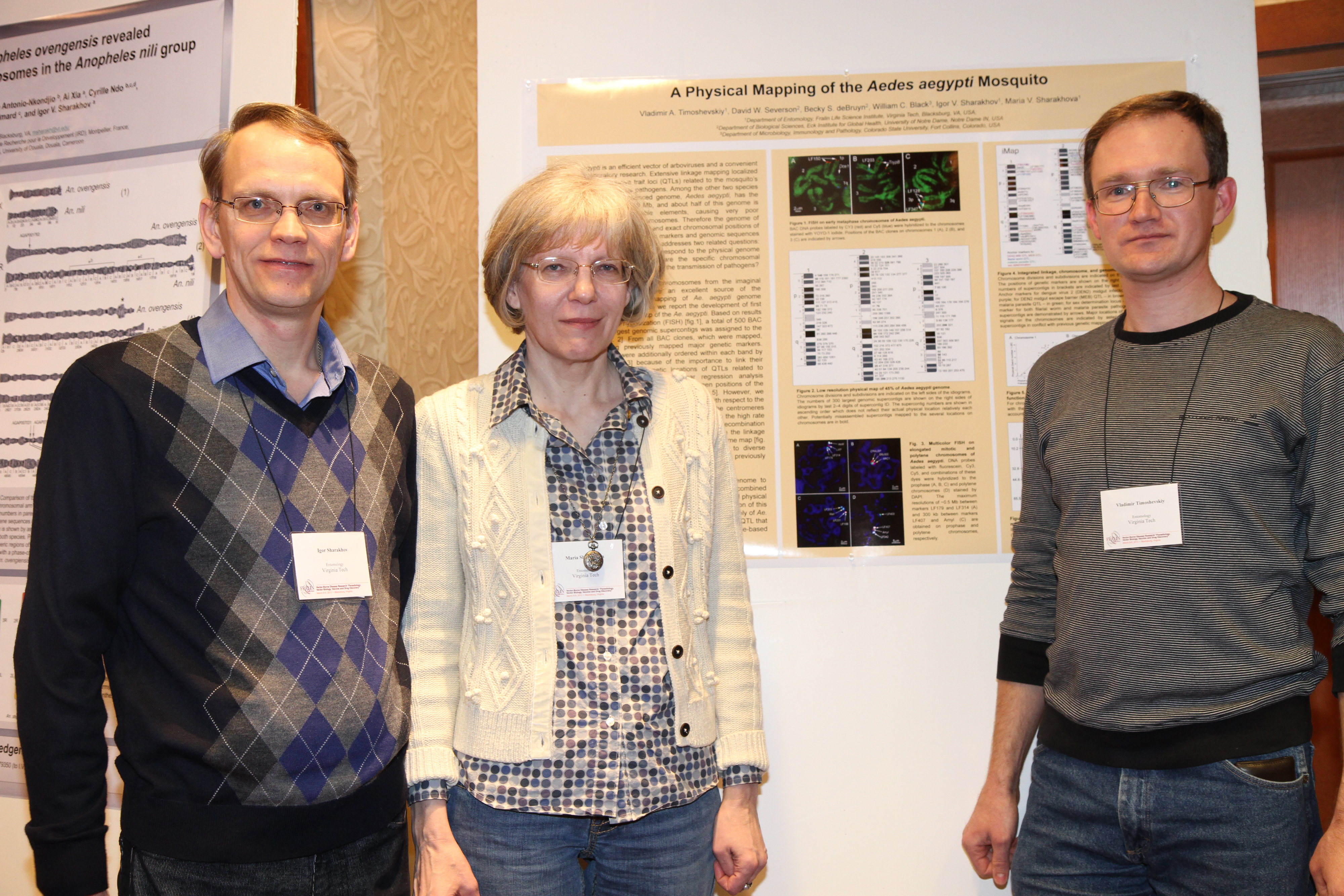Fralin entomologists map out the genetics behind a deadly disease

Stopping the spread of dengue infection-- a potentially fatal tropical disease transmitted by the Aedes aegypti mosquito-- could be one of the biggest challenges of our time. About half of the human population is at risk for this disease, and threat levels are on the rise in the United States due to increased international travel and an ideal climate for mosquitoes in humid, hot areas such as Florida.
Symptoms of dengue fever, according to the Centers for Disease Control, are severe headache; bleeding; and severe muscle, joint, or eye pain.
The key to zapping the disease’s transmission is the careful mapping of the mosquito’s genome, according to Virginia Tech entomologist Maria Sharakhova, a research scientist in the College of Agriculture and Life Sciences and the principal investigator of a study published in February in PLoS Neglected Tropical Diseases.
If scientists can identify the location of the genes that allow for dengue transmission, and inhibit this trait in future generations of mosquitoes, the disease might hit a roadblock.
Sharakhova and her research team developed a 'master map' of the mosquito’s genome that allows scientists to view the locale of genes contributing to the trait of dengue transmission. Unlike previous studies attempting to map genes, this technique allows researchers to view multiple "unrelated" locations in a few major chromosome clusters.
"The map suggests a possibility that the same genes control the transmission of different pathogens, which would allow us to find and control these genes much more efficiently," said Igor Sharakhov, a coauthor of the paper and an associate professor of entomology in the College of Agriculture and Life Sciences affiliated with the Fralin Life Science Institute.
"This is a landmark study. Prior to the work of Sharakhova and Sharakhov, the Aedes aegypti genome was woefully incomplete. It was like a mixed-up jigsaw puzzle with no order and no logic," said Leslie Vosshall, the Robin Chemers Neustein Professor of Neurogenetics and Behavior at The Rockefeller University, who did not participate in the study. "These scientists have created the important foundations of a complete genetic map, something that is needed to progress to the next set of crucial experiments with this major disease vector. A genetic map is a blueprint that allows scientists to map traits to genes and this paper now allows us to attempt this in this mosquito."
"This project is a true tour de force and it is now only a matter of time to obtain the full DNA sequence of the three large chromosomes to catapult research into new directions and high-resolution detail for this important mosquito," said Jeffrey Powell, professor of ecology and evolutionary biology at Yale University, who also did not participate in the study.
The map may also help curb other diseases transmitted by Aedes aegypti, such as yellow fever that leads to a liver disease, and lymphatic filariasis, which caused by a worm that leads to the disease elephantiasis.
Other study authors include Vladimir A. Timoshevskiy, a postdoctoral research associate in the Sharakhov laboratory; William C. Black, a professor of microbiology, immunology and pathology at Colorado State University; David W. Severson, a professor of biological sciences at Eck Institute for Global Health of the University of Notre Dame, and Becky S. deBryun, a technician in the Severson laboratory.




